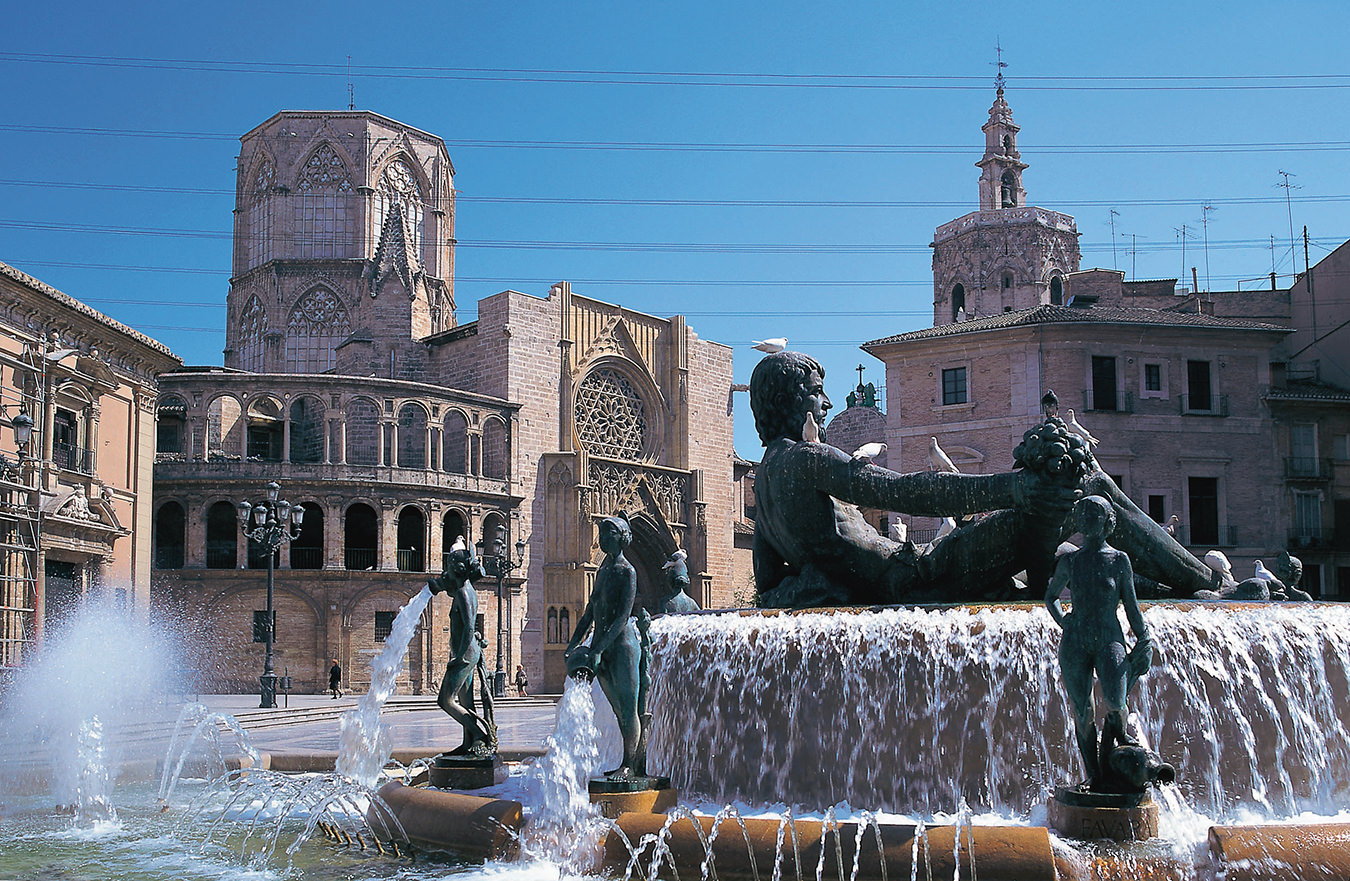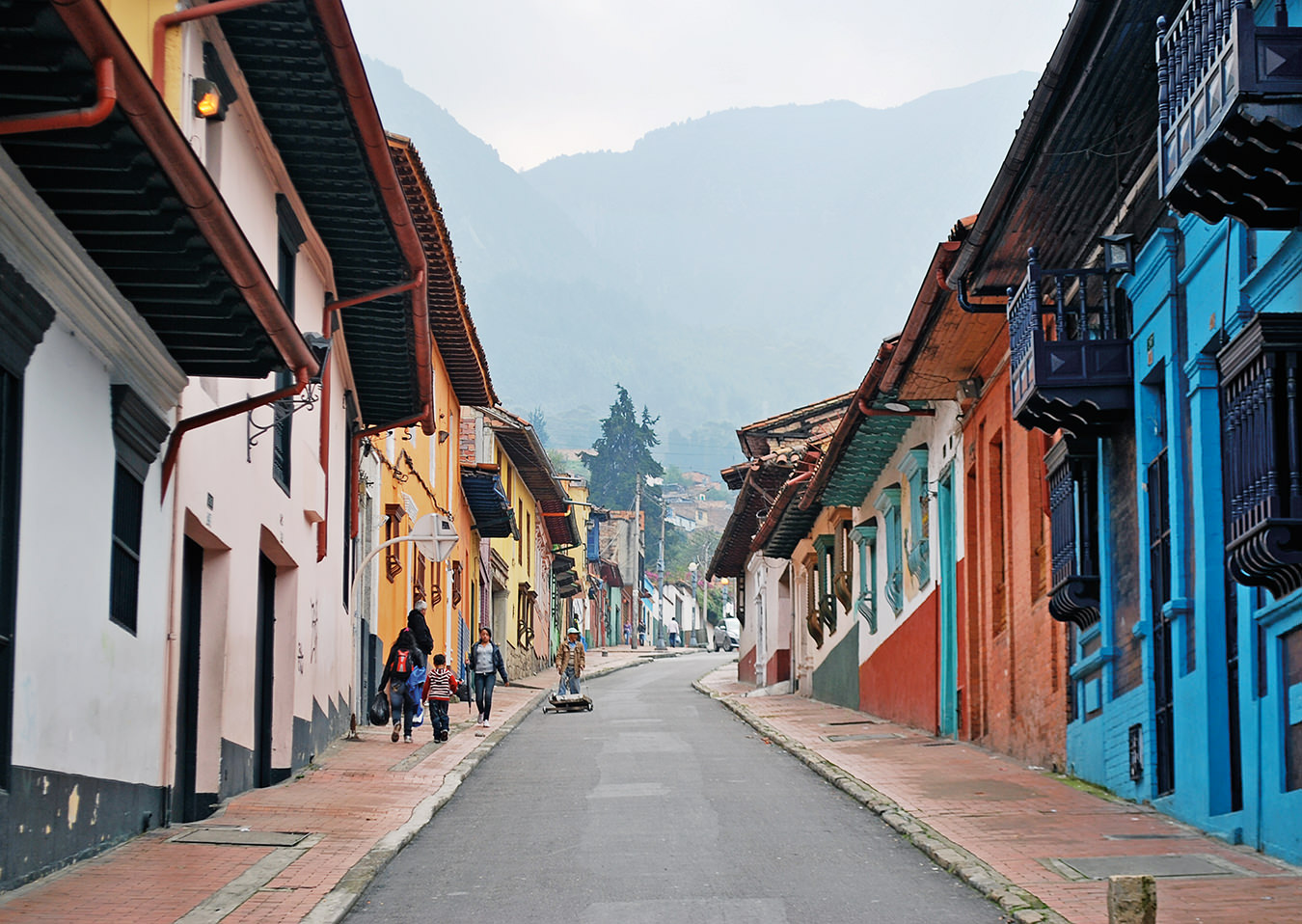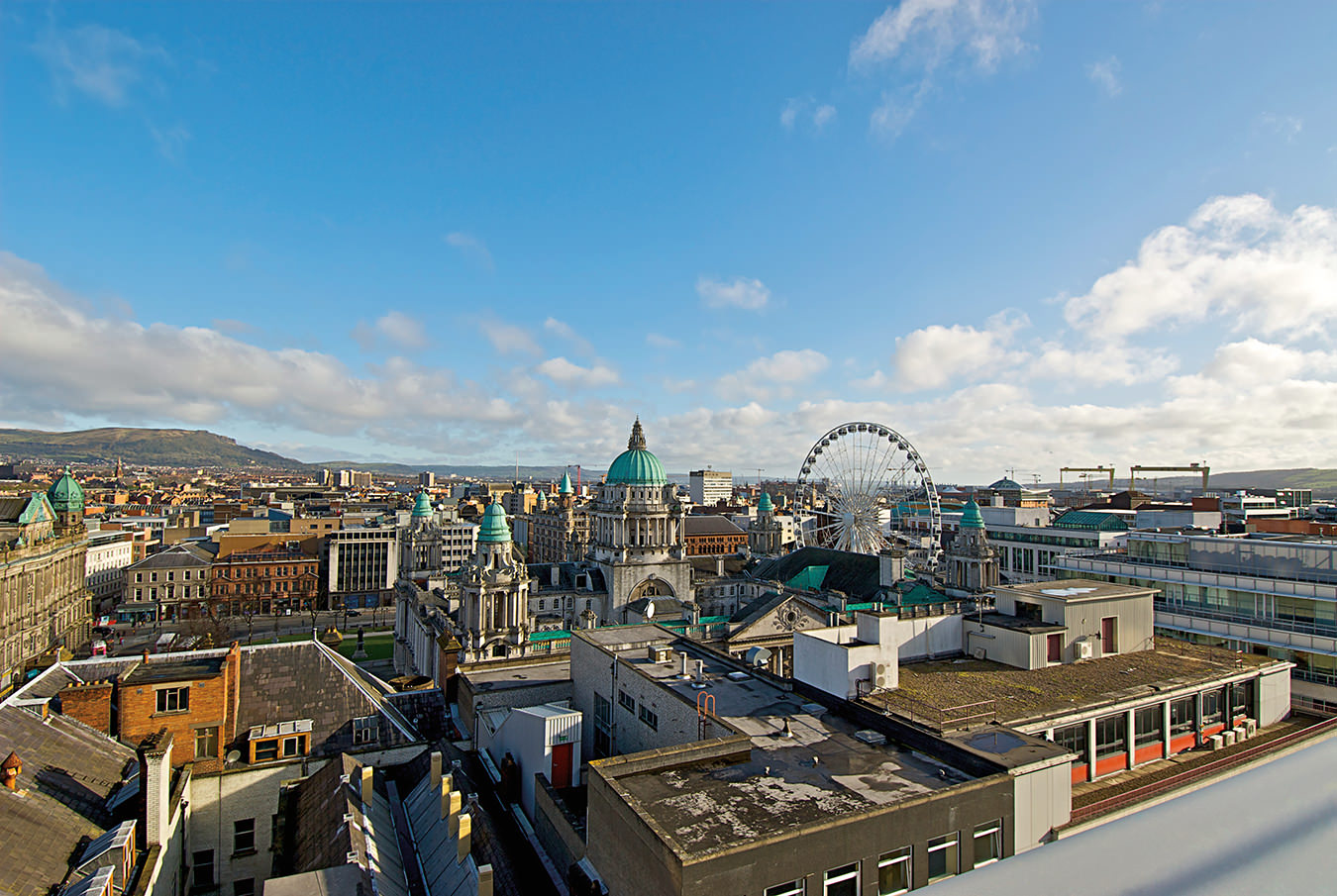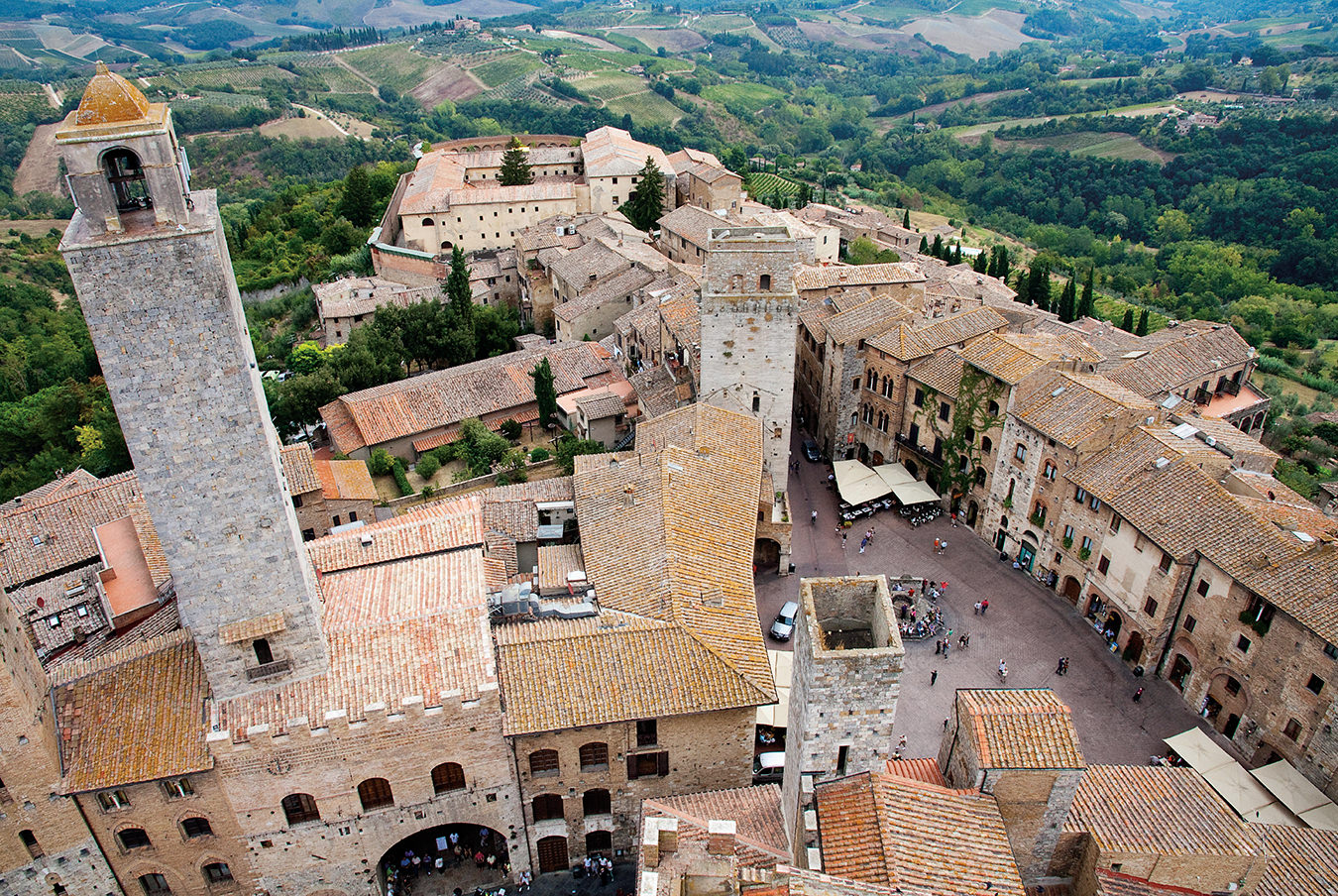-
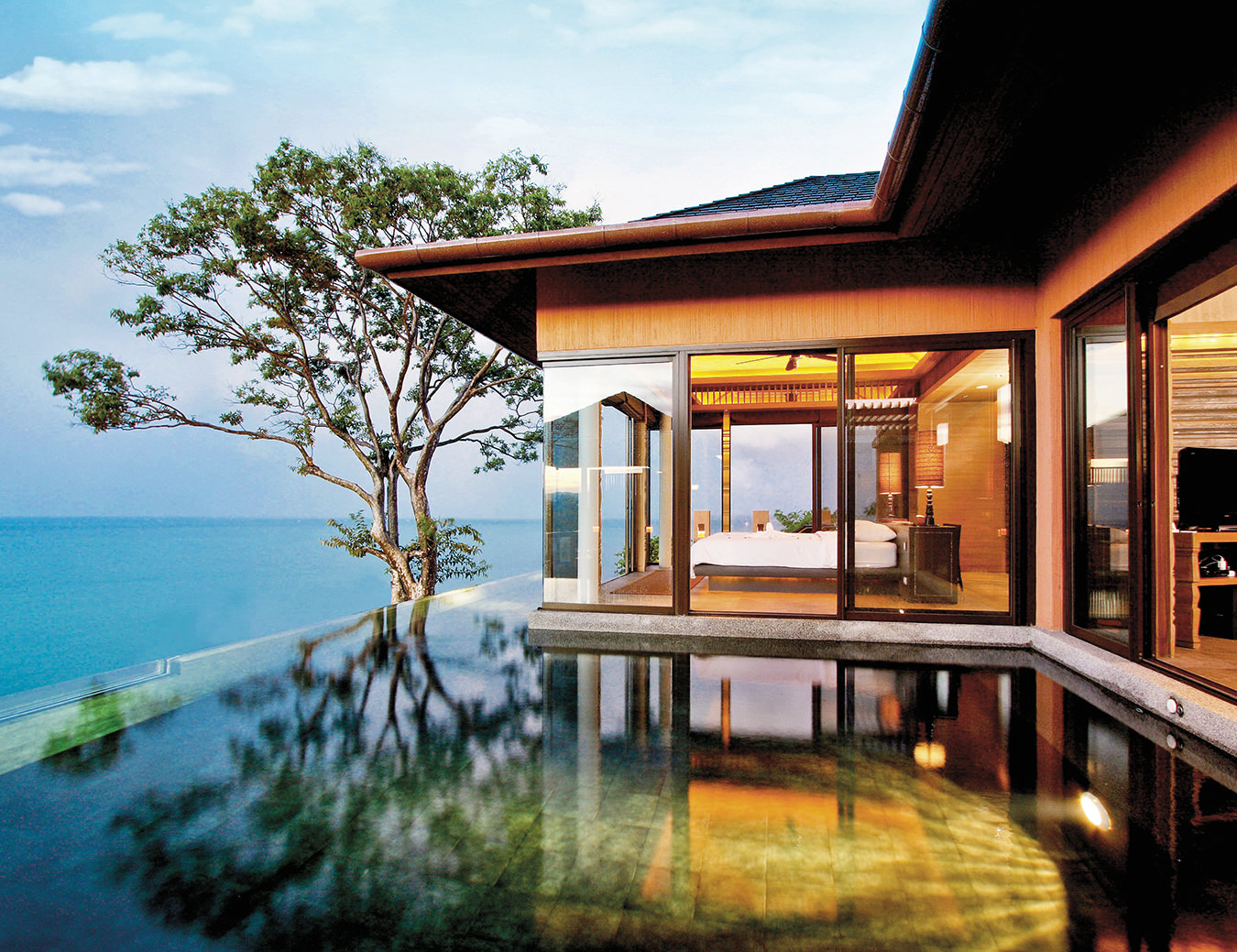
A luxury villa suite at Sri Panwa, overlooking the Andaman Sea. Photo provided by Sri Panwa.
-
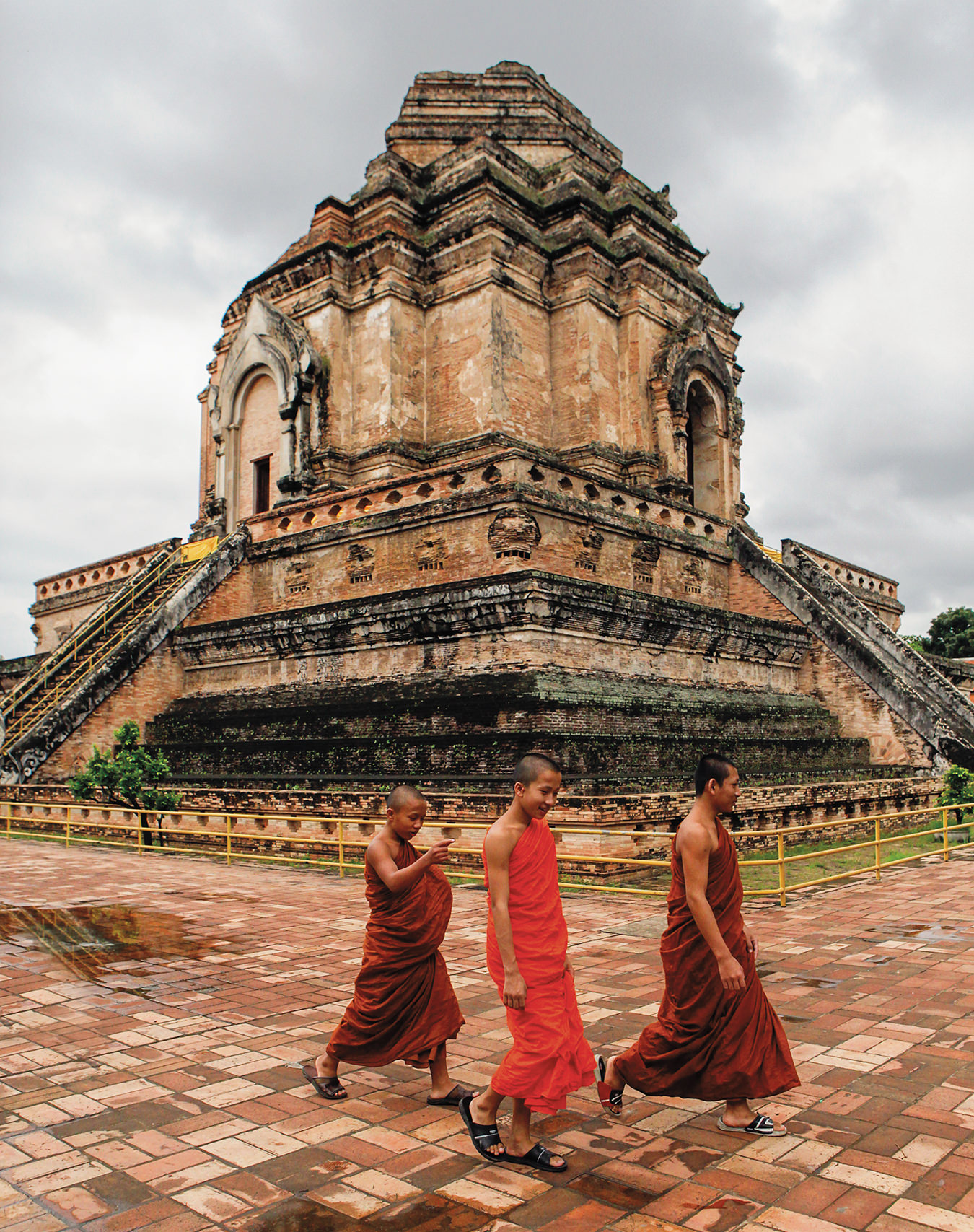
Robed monks stroll by the 14th-century Wat Chedi Luang temple in Chiang Mai, built in the traditional Lanna style.
-
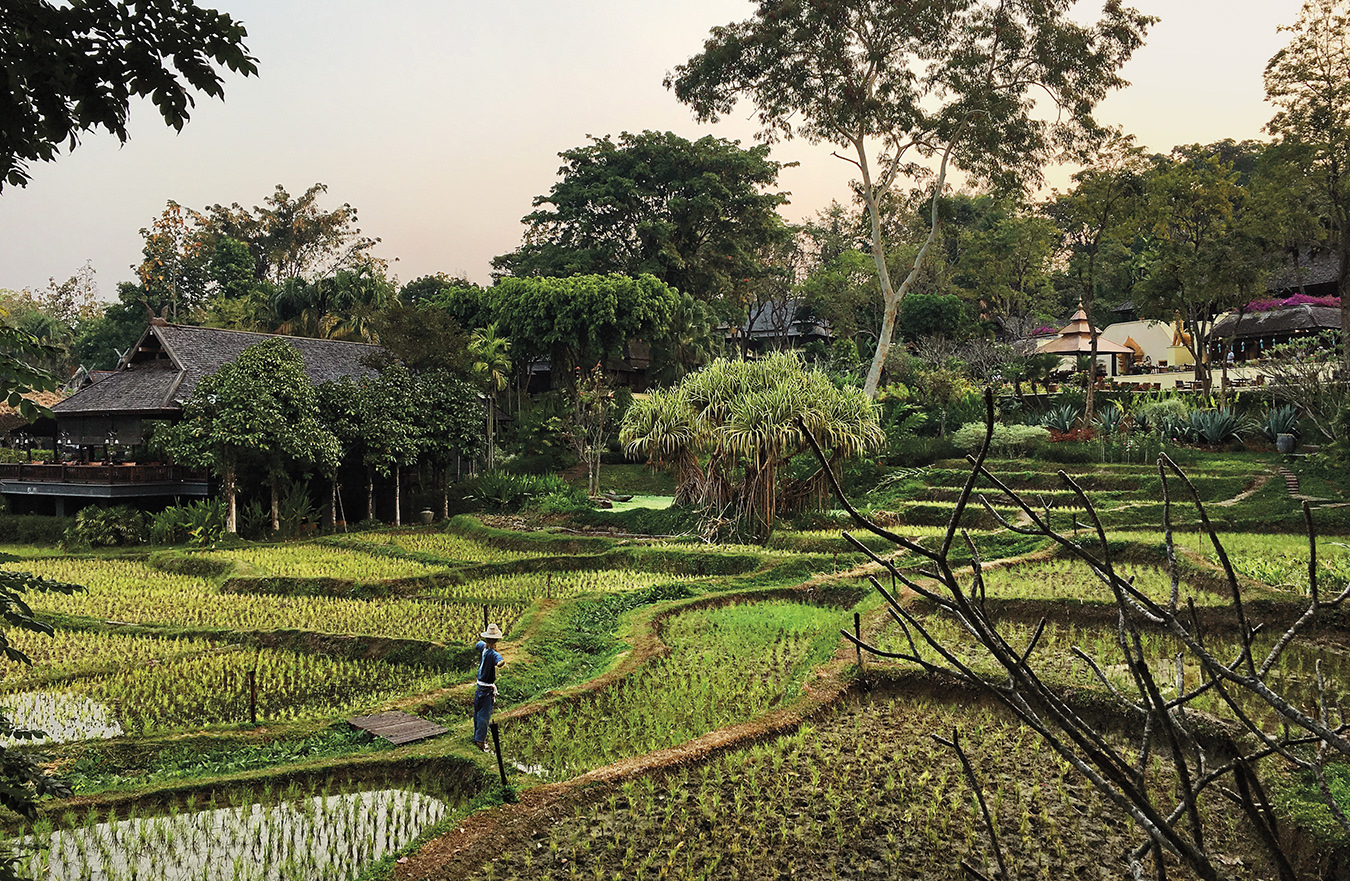
Accommodations at the Four Seasons Resort Chiang Mai look out upon rice paddies, where about 2,000 kilograms of rice are grown annually. Photo provided by the Four Seasons Resort Chiang Mai.
-
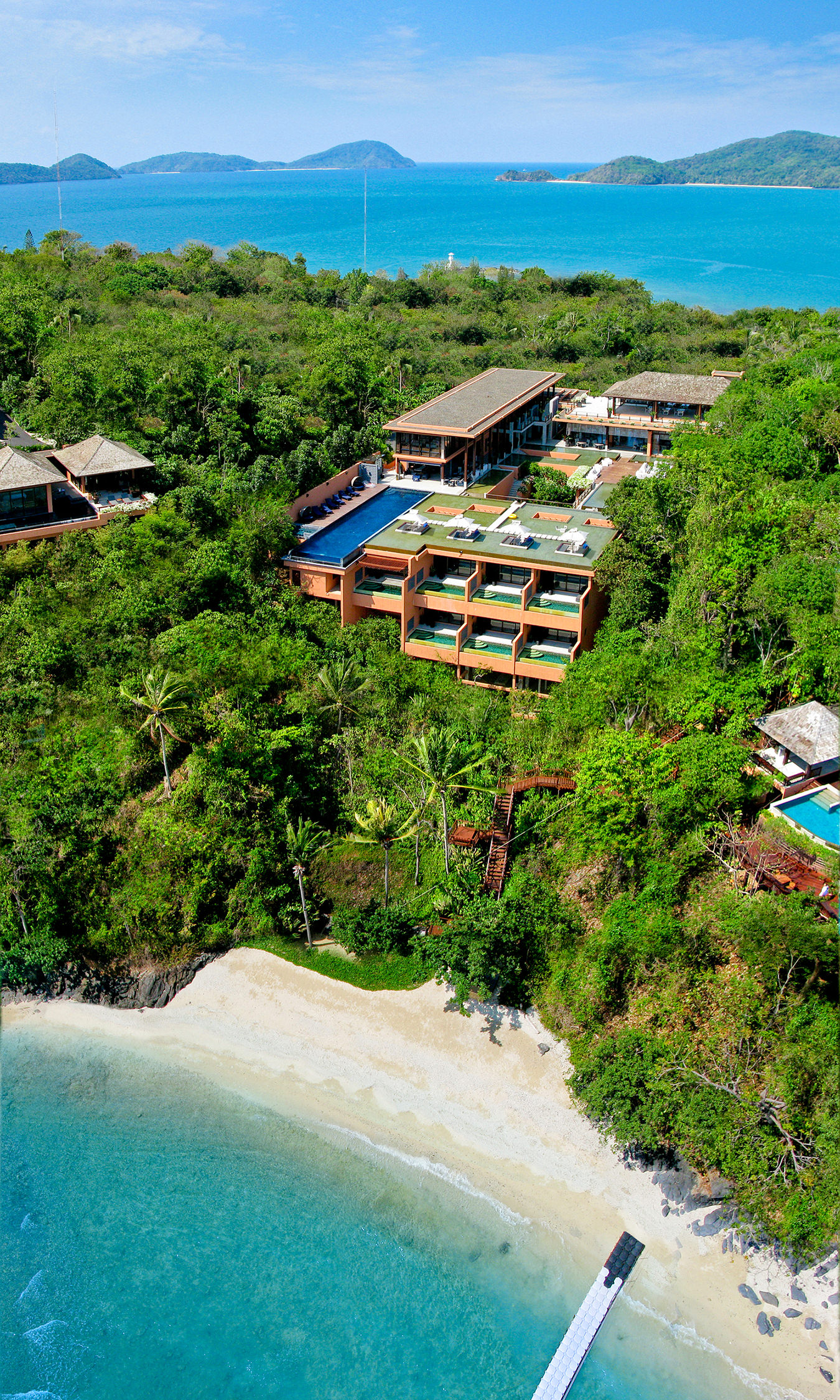
Idyllic Sri Panwa, one of the country’s top hotel’s, is a 1.5-hour flight south of busy Bangkok. Photo provided by Sri Panwa.
-
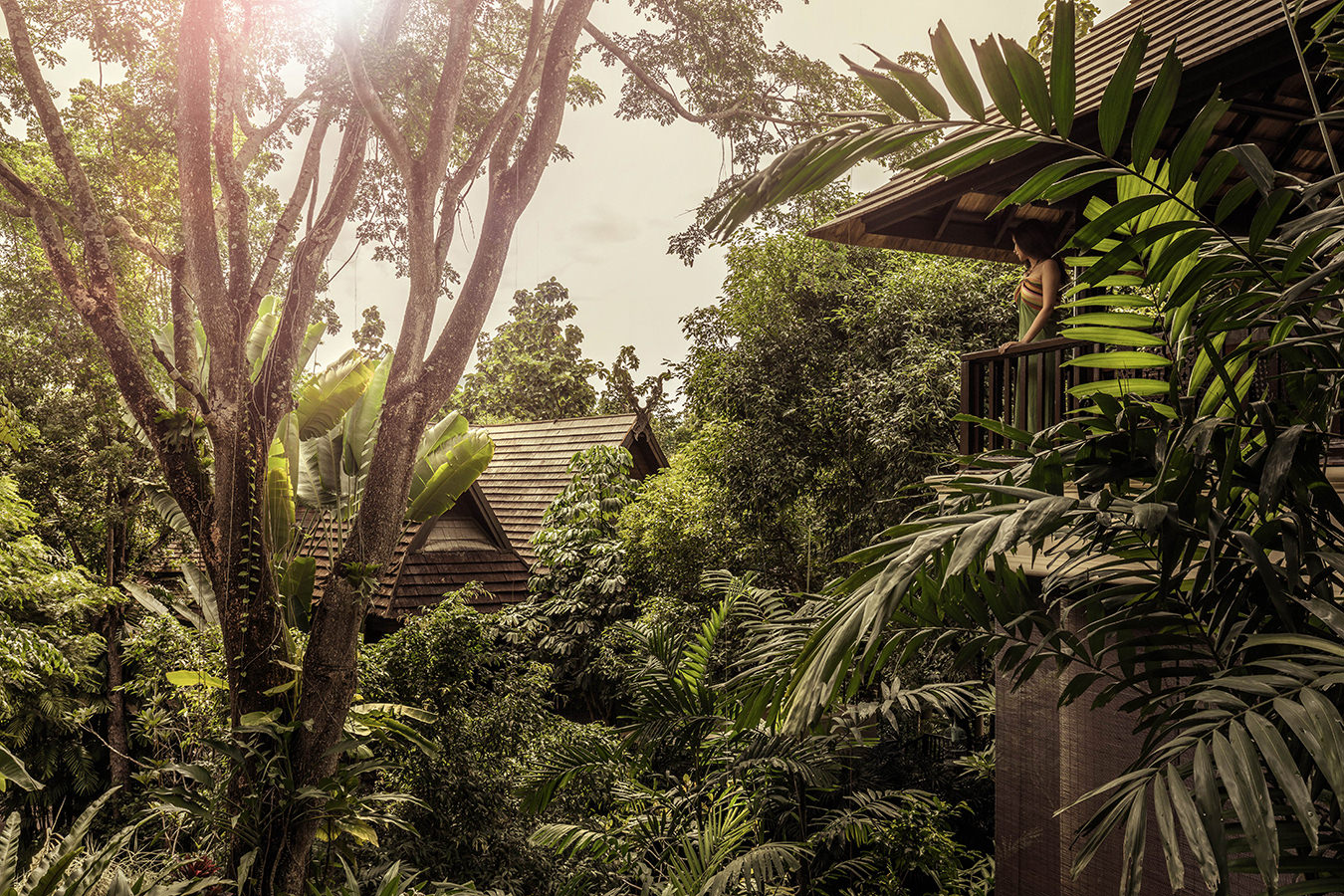
The Four Seasons Resort Chiang Mai boasts 98 pavilions and luxury villas, each with natural teak floors, vaulted ceilings, and open-air verandas. Photo provided by the Four Seasons Resort Chiang Mai.
-
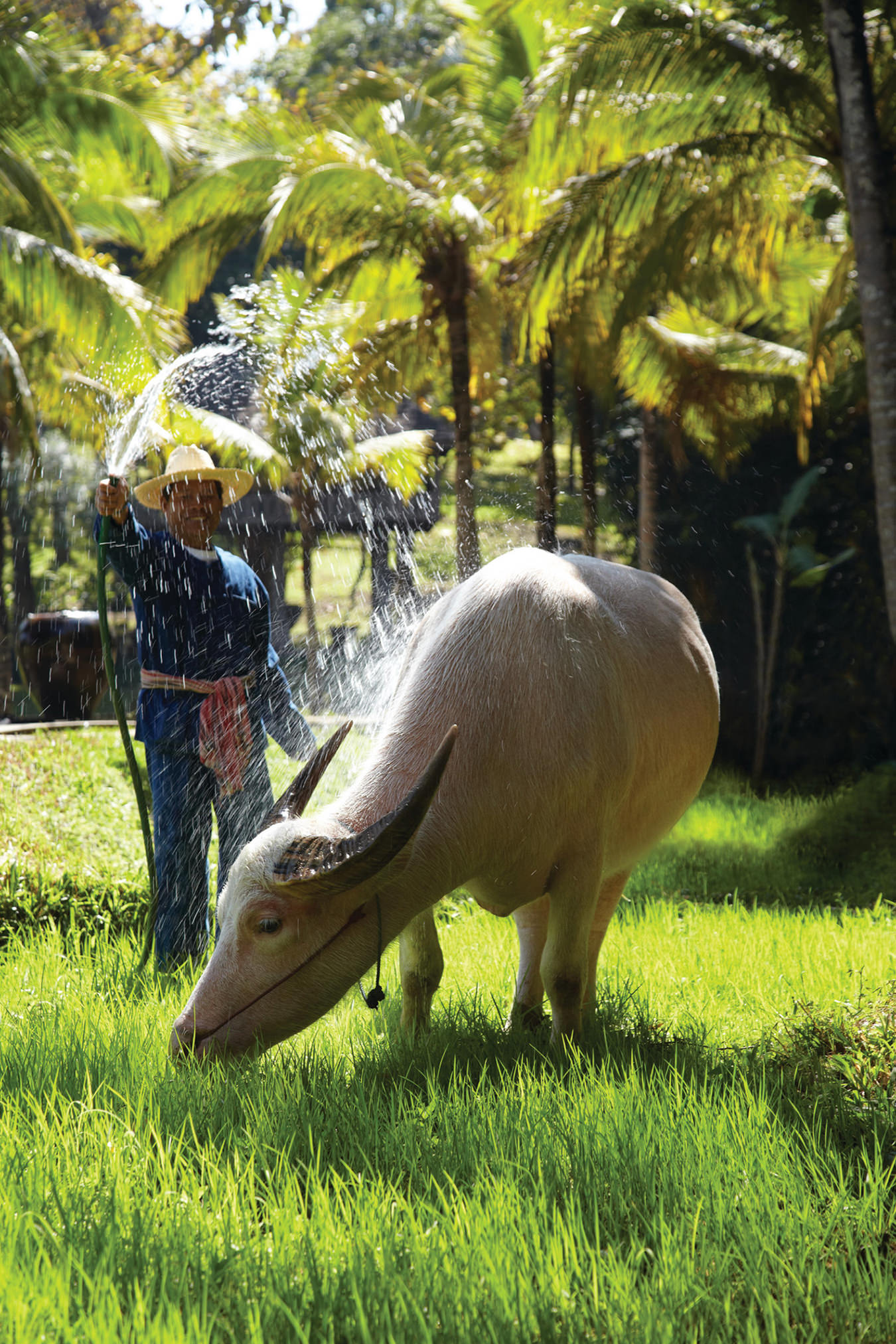
Mr. Tong, the resident albino water buffalo at the Four Seasons Resort Chiang Mai. Photo provided by the Four Seasons Resort Chiang Mai.
-
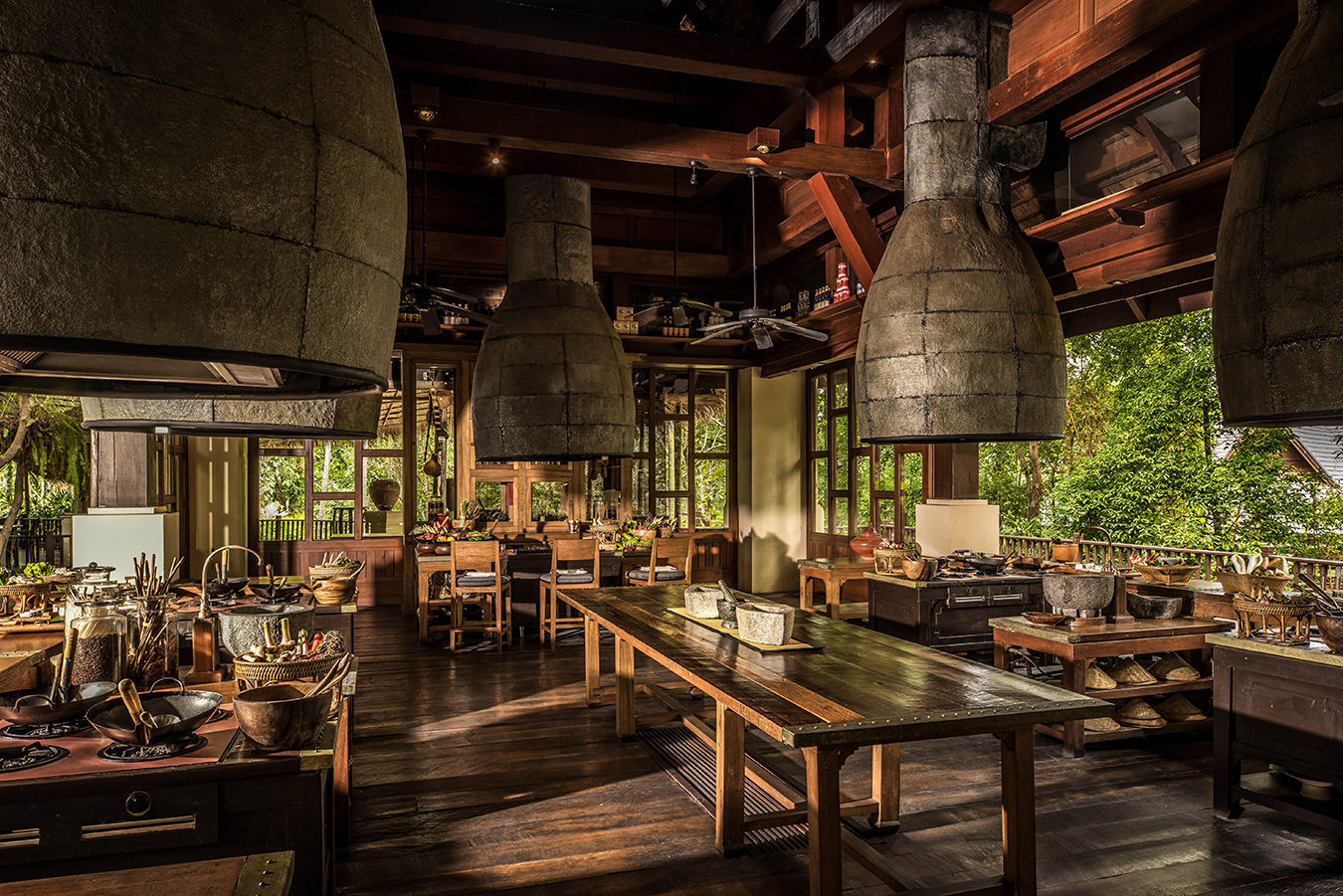
The full-service cooking school at the Four Seasons Resort Chiang Mai. Photo provided by the Four Seasons Resort Chiang Mai.
-
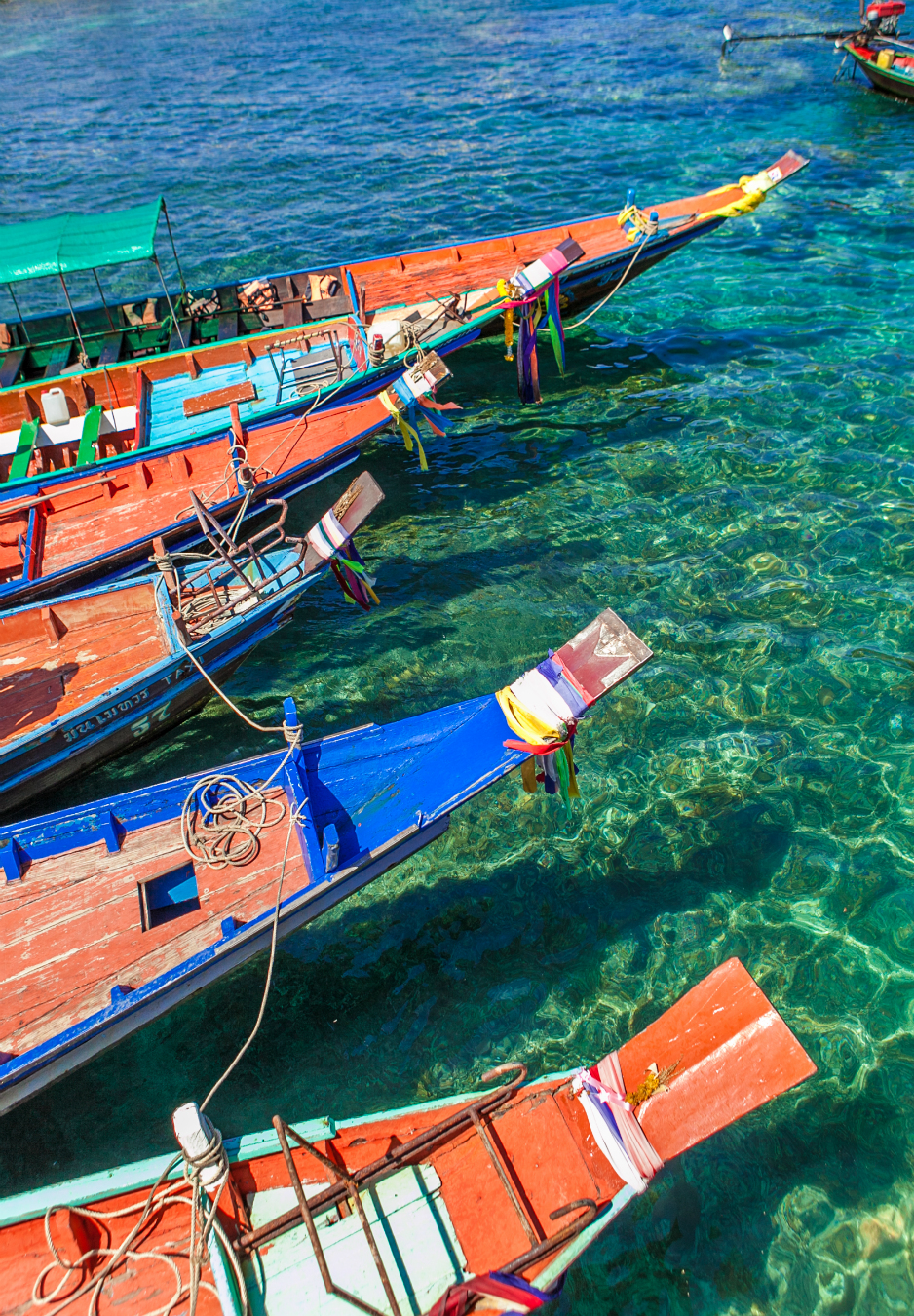
Traditional wooden long-tail boats at rest in the Andaman Sea. Photo by Katie Nanton.
-
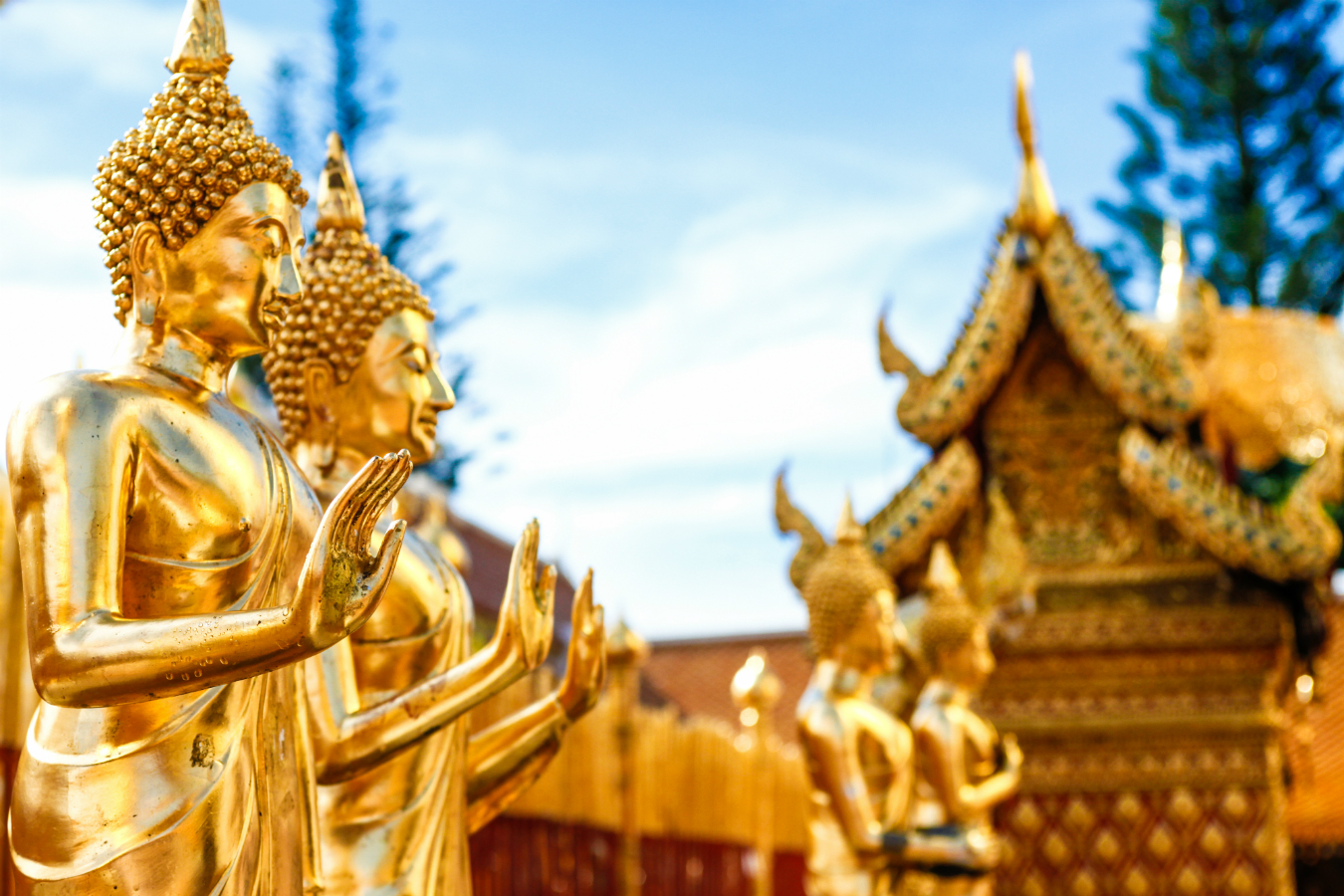
The mountaintop Wat Phra That Doi Suthep in Chiang Mai is a bright beacon of spirituality.
-
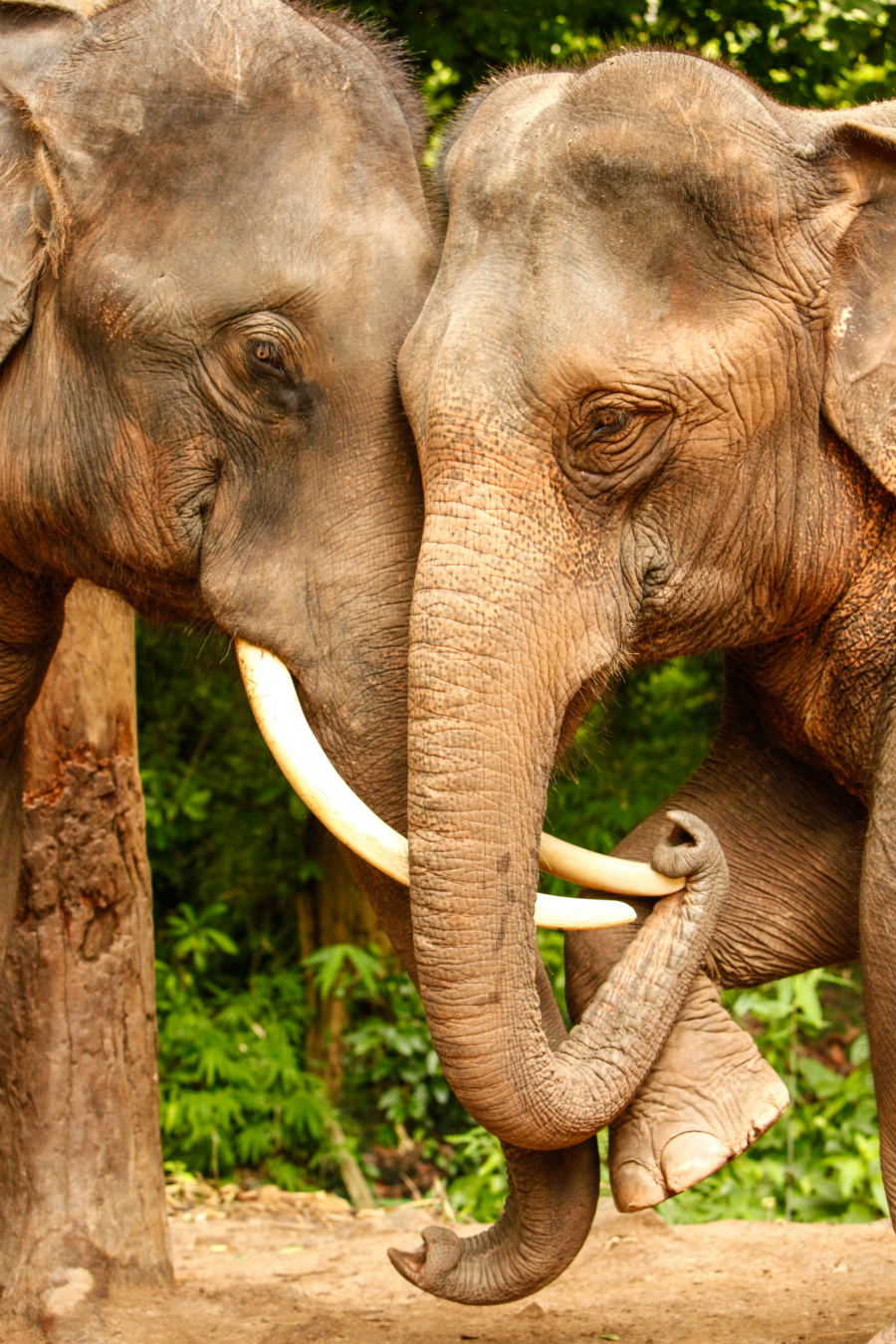
At Patara Elephant Farm, Thailand’s only elephant breeding farm, guests spend a day looking after an elephant.
-
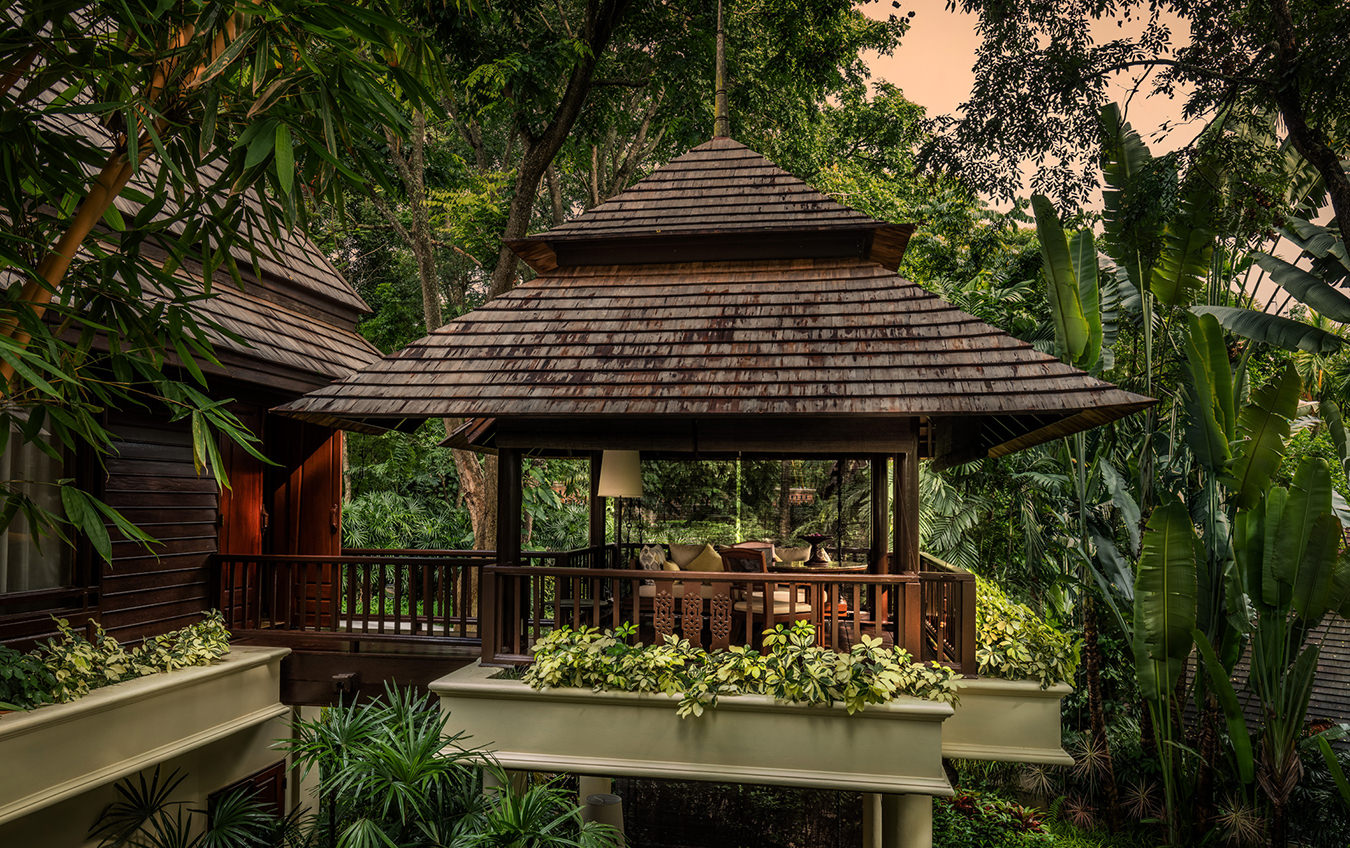
The Four Seasons Resort Chiang Mai is embedded in jungle-like greenery in the Mae Rim district. Photo provided by the Four Seasons Resort Chiang Mai.
-
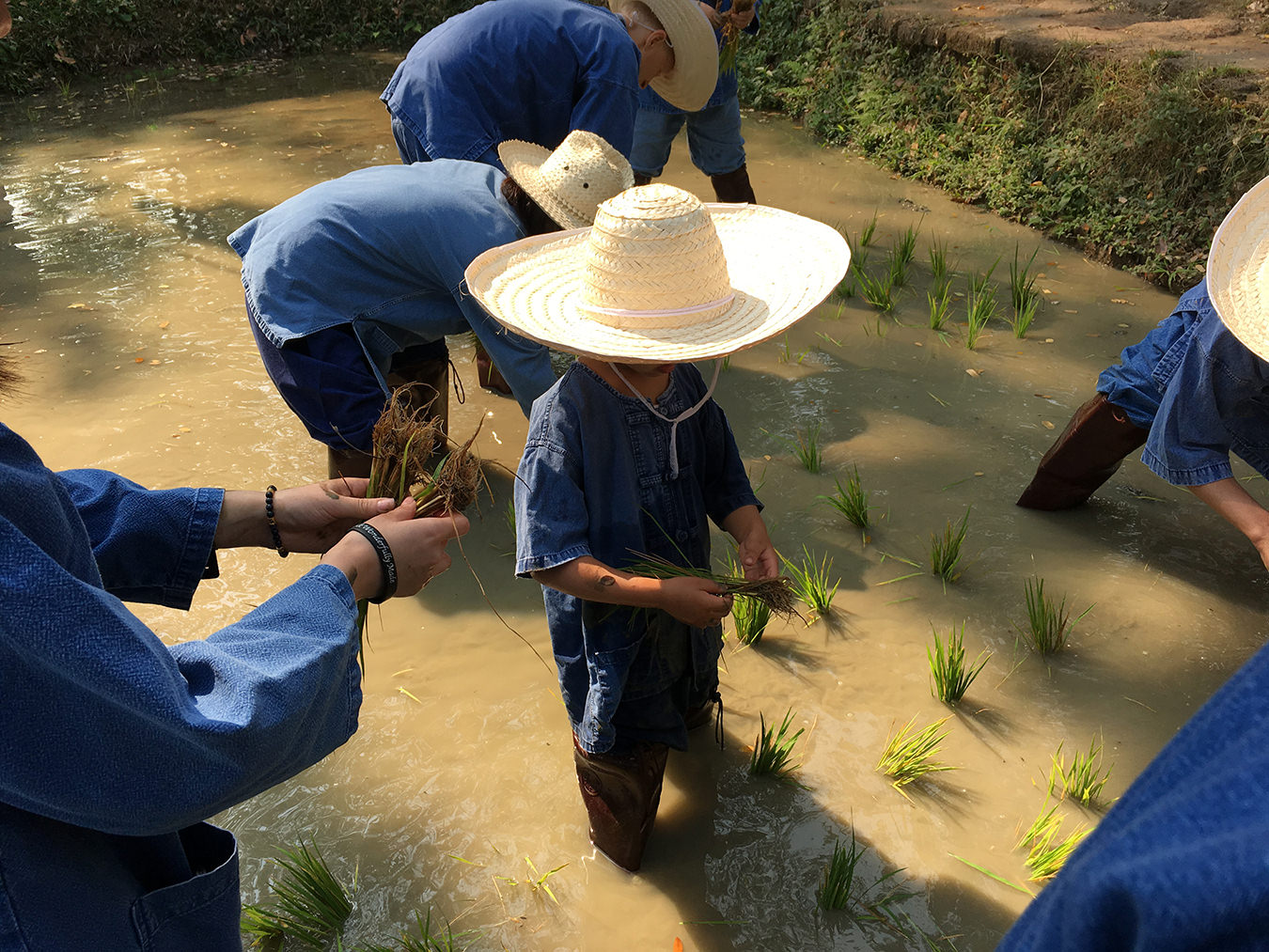
At the Four Seasons Resort Chiang Mai, guests don loose-fitting denim garments and learn how to farm the on-property rice paddies. Photo by Katie Nanton.
-
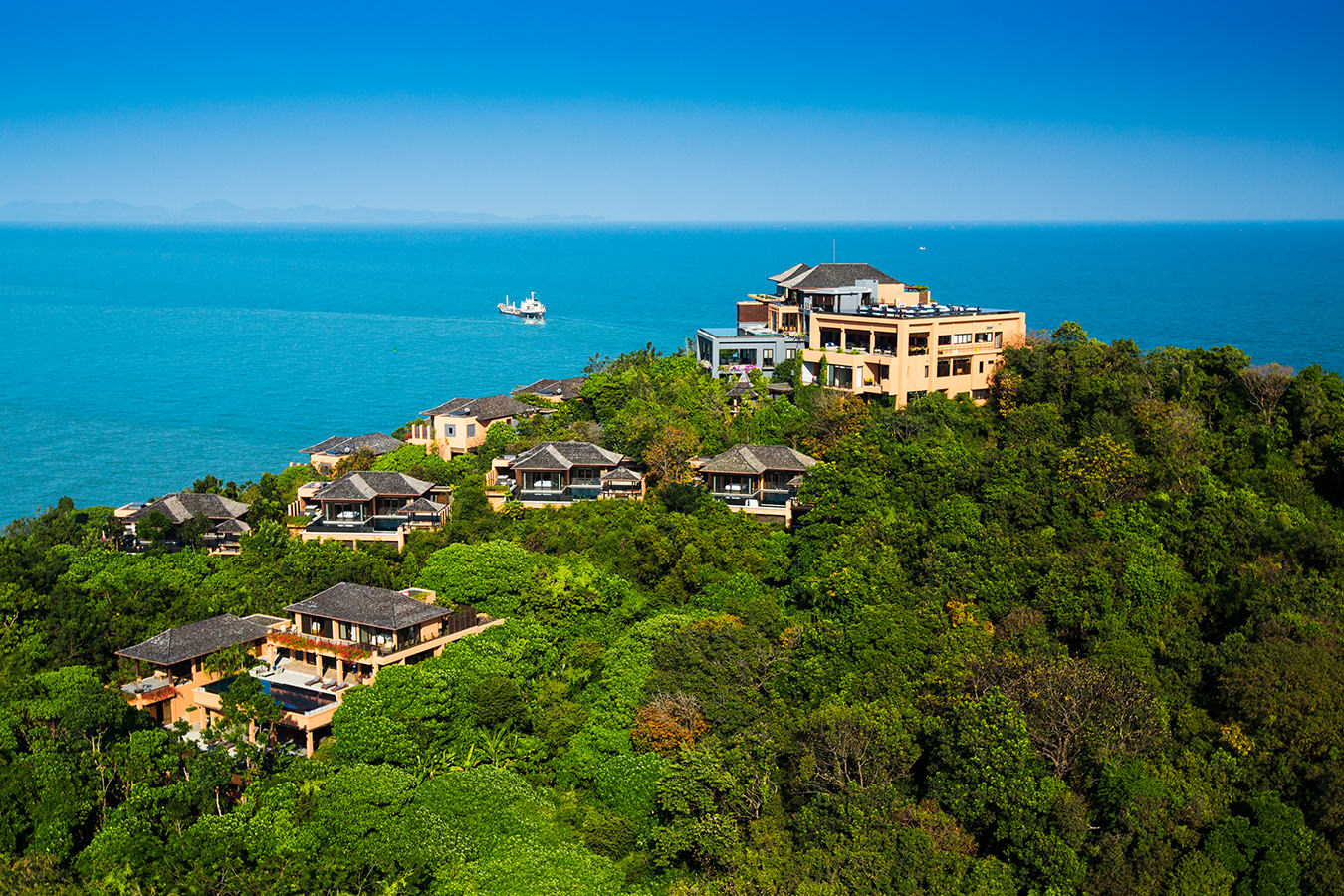
Sri Panwa’s villas are artfully scattered across 40 green acres on the tip of Cape Panwa, Phuket. Photo provided by Sri Panwa.
Chiang Mai and Phuket, Thailand
In the moment.
The sky is on the cusp of sunset when an albino water buffalo crosses my path. Trailing the burly creature at the Four Seasons Resort Chiang Mai’s entrance are a handful of farmers dressed in mo hom (traditional denim) garments. The men and women sing a chorus to signify the workday’s end as the revered animal named Mr. Tong (which means gold) turns, his pale skin taking on the tawny hue of dusk, and lopes down the tree-lined path.
Snap. As far as freeze-frame moments go, Thailand doesn’t hold back.
This sight of Mr. Tong, seen in the country’s north, is just one emblazoned on my mind from “the land of smiles”. Densely rich culture and cuisine, natural beauty, and warm people—it’s wise to dive into Thailand’s contrasts by pairing a visit to the trek-worthy north with a stay in the beach-blessed south. Of course, you should spend the requisite few nights exploring the chaotic beauty of Bangkok, but then, pack up and fly.

Robed monks stroll by the 14th-century Wat Chedi Luang temple in Chiang Mai, built in the traditional Lanna style.
By plane, Phuket is about 1.5 hours south of Bangkok and its reputation for sunburnt, partying backpackers wearing Singha beer shirts can be swiftly dispelled by looking past the airport and embarking on an hour’s drive to Sri Panwa, one of the country’s finest hotels. With its villas artfully scattered across 40 green acres on the tip of Cape Panwa, the property is family-owned and headed up by the affable Vorasit “Wan” Issara, whose personality reflects the laid-back hospitality that permeates the seaside resort. In fact, it’s not uncommon for the 35-year-old boss to invite guests—along with his international crew of close friends and a few friendly resort staff—to cruise onboard his sleek yacht, or to join in for a fusion feast at his grand on-property mansion. (Sri Panwa’s past celebrity guests have included the likes of Gordon Ramsay and Snoop Dogg. As Issara fondly recalls: “He filmed his ‘Torn Apart’ music video here, then DJed for us all night.”)
The resort’s luxury villas range from spacious one-bedroom suites to a five-bedroom residence that clocks in at a gluttonous 21,500 square feet. My suite bears the moniker shamu, feels like an inhabitable jewellery box and, on one side, has a private infinity pool that’s big enough to swim lengths in. The contemporary interiors incorporate elements of mid-century modern decor and Thai design with fun contemporary touches like a full sauna and Jacuzzi, iPods pre-loaded with chill-out mixes, and a fully stocked complimentary mini-bar. (Cold bottles of Phuket lager beer? Check.) It’s a beach-vacation playground, and from my floor-to-ceiling windows I overlook Sri Panwa’s 100-metre-long pier snaking out into the sea below and yacht-studded waters beyond.
The best lookout in the house, however, is from 60 metres above the water at the property’s highest point. That moment in Danny Boyle’s film The Beach when Leonardo DiCaprio first lays eyes on his blissful stretch of sand is how I feel pushing through the doors of the rooftop Baba Poolclub, with its 360-degree panoramic view across the Andaman Sea. Perched amidst plush striped cushions and low tables, guests sip white wine while taking selfies as the sun sets.
That beach DiCaprio discovered is on Koh Phi Phi, just a 15-minute boat ride away from the resort, but since it’s become a popular destination those in the know tend to set a course toward lesser-known isles like Racha Yai, Maiton, and Lon. Book a yacht charter or traditional wooden long-tail boat ride, and take off. A few basketball-sized pink jellyfish might glide by in the open ocean, but there are countless white-sand beaches and hidden coves to swim or snorkel through before heading “home” to dinner by a pool, or a cold Sri Panwa cocktail on a patio.

Idyllic Sri Panwa, one of the country’s top hotel’s, is a 1.5-hour flight south of busy Bangkok. Photo provided by Sri Panwa.
Unsurprisingly, the coveted tables at Baba Poolclub often book up in advance, but the resort does not want for dining options. Baba Hot Box is a necessary stop, serving grilled Korean cuisine with a Thai twist such as barbecued king prawns and short ribs cooked in a Josper charcoal oven and served with sides of spicy chimichurri or truffle sauce. Baba Iki, an exceptional sushi restaurant that opened last year, flies in fresh fish from Japan for its artfully-plated sashimi.
For off-site exploration, drive into downtown Phuket, where unique backyard bars hide next door to hip coffee shops like Bookhemian, which doubles as a bookstore/art space; they sell cashew butter at the counter and have Haruki Murakami’s latest novel on the shelves. One could dwell there all day, then head down the road to a futuristic bar called Zimplex Mixology Laboratory. Known for serving shot glasses filled with drinkable art installations, owners Parist “Tom” Auttayatamavittaya (along with his partner, Chanida “Nann” Yantapanit) are, as Tom tells me, “hacking density laws” with their scientific drink creations. The shaggy-haired mixologist (who also goes by the name Tom Funk) won first place in Thailand and top 10 in Asia Pacific during the Bols Around the World 2015 bartending competition. It’s easy to see why: one shot, named Spectrum Jellyfish, looks like a miniature lava lamp, with streams of something resembling melted crayons spooling into clear vodka. The Nebula Jellyfish tastes sweet and strong, and glows like a tiny disco ball before I shoot it back. Snap.
As far as freeze-frame moments go, Thailand doesn’t hold back.
Returning to my villa, there is a piece of paper with a Buddhist quote on the turned-down bed: “We can always begin again.” And so the next day, I do, by flying north.
The heart of Thailand’s arts and culture scene, Chiang Mai is home to hundreds of temples and retains ancient vestiges of walls and moats in the city centre that date back to the 1200s. A peacefulness can be found in the voids of the old walled city: no Bangkok-like skyscrapers compete for attention with distant bluffs, fewer clamouring throngs of tourists. And there is warmth of a different kind. Upon arrival, the coffee shop I seek out is none other than the women’s correctional institute vocational training centre, which has a café awash with light-green tablecloths. The shop functions as a transition point where convicts can work before being reincorporated into society; the oliang (Thai iced coffees) are some of the best in town.

The mountaintop Wat Phra That Doi Suthep in Chiang Mai is a bright beacon of spirituality.
It wouldn’t be Thailand without a tuk-tuk ride and so I hop on one and take it to the vibrant Warorot Market. Northern delicacies are a specialty here, and travellers and locals alike flock to purchase fresh Thai sausages, packets of curry paste, and bowls of steaming khao soi (a curried noodle dish). Packed with fresh herbs, the dishes of the north have a spicier kick when compared to those of central Thailand and the country’s number one export, khao (rice), forms not only the core of many fragrant meals but is often the base of a sweet finish, too, showing up in desserts such as khao niew ma muang (sticky rice, ripe mango, and a rich pour-over of coconut milk) or treats like khao lam (Thai rice pudding cooked in a bamboo stick).
Indeed, Chiang Mai’s culinary reputation precedes it and that can, in part, be credited to a single seed: sticky rice, the grain preferred in the north over oft-coveted jasmine.
Rice is so important to Thai culture that members of farming families are traditionally allowed to take two or three weeks off of work each year to help out during the rice harvest. I partake in part of this ritual myself at the Four Seasons Resort Chiang Mai. Donning the same loose-fitting denim garments and straw hat as the farmers I had met upon arrival, I wade ankle-deep through a flooded field in rubber boots. “We joke that the birds of this valley come to the Four Seasons for the rice buffet,” says my guide, showing me how to replant green rice fronds in the watery basin that forms part of the expansive property. (About 2,000 kilograms of rice are grown here annually, and most is given as offerings to a local group of monks.)
Situated in a lush valley in the Mae Rim district, the Four Seasons Resort Chiang Mai is embedded in jungle-like greenery and home to 98 pavilions and luxury villas, each with natural teak floors, vaulted ceilings, and open-air verandas. The resort is known for its full-service cooking school and spa as well as its biodiversity offerings, including the rice-planting experience and guided nature walks throughout the property.
One morning, I rise early to birdsong and breakfast overlooking the rice paddy: vases of crimson orchids, baskets of fresh croissants and madeleines (the executive chef, Stéphane Calvet, is French), and soft-boiled eggs topped with caviar greet me.
It’s the ideal fuel before taking on the 309-step walk up the mythical naga (serpent) staircase to the mountaintop Wat Phra That Doi Suthep. Chiang Mai’s most famous holy temple—a mecca of murals, shrines, and statues—is reached by way of a winding drive that climbs up high and reveals sweeping city views below. Led by Jack of Trikaya Tours, I learn that every July, a flood of 10,000 students and faculty from Chiang Mai University make an annual pilgrimage to honour the spirit of the city, which is believed to reside in the mountain. The temple was originally built as a Buddhist monastery in 1383 and still functions as such today, so monks are a common sight. Jack stops me in the sunshine to explain their place in the modern-day fabric of Thai Buddhism. “There are many rules—227 items for monks and 10 for novices.” It is an expectation for many young men to be ordained as monks, which is considered a rite of passage, undertaking a two-week training period around the age of 18.
In Chiang Mai, a peacefulness can be found in the voids of the old walled city: no Bangkok-like skyscrapers, fewer clamouring tourists.
The temple’s original copper-plated chedi (a structure containing relics) is the holiest area of the ornate grounds. “Walk around the golden temple three times to grant luck and wishes,” instructs Jack. “Then go and be blessed.” And so I do, circling the gold tower—one, two, three—before kneeling before a robed monk, head bowed. He whispers a blessing then throws water on my brow as the smell of incense wafts all around.

The Four Seasons Resort Chiang Mai boasts 98 pavilions and luxury villas, each with natural teak floors, vaulted ceilings, and open-air verandas. Photo provided by the Four Seasons Resort Chiang Mai.
Back in town there is another Lanna-style temple worth discovering, Wat Chedi Luang. Until 1475, the famed Emerald Buddha of Bangkok’s Wat Phra Kaew was housed in the eastern niche; a replica takes its place today. In addition, five elephant sculptures line the base of the chedi on the southern face, of which four are reproductions, but the elephant on the far right is still the original brick and stucco. It’s a fitting fact to learn before my next stop, Patara Elephant Farm, which is Thailand’s only elephant breeding farm.
Deep in the hilly Hang Dong district, Patara’s “elephant owner for a day” experience tops the bucket list of many travellers because it is a highly respected operation run by Theerapat “Pat” Trungprakan, whose affection for elephants is evident. “People love to hear about elephant rescues, but animal conservation has become a business,” he explains. “Rescuing elephants is only the beginning.” Trungprakan’s farm is home to 64 elephants that have been saved from unsuitable working conditions. “We cannot say ‘rescuing animals’ like we are heroes,” Trungprakan says. “What we do here is a health-recovery management package.” As he puts it, costs of the tourist experience go toward keeping the elephants in a natural environment with a highly-trained staff, where they can breed, which they do, at a 100 per cent baby survival rate.

The full-service cooking school at the Four Seasons Resort Chiang Mai. Photo provided by the Four Seasons Resort Chiang Mai.
With that in mind, I put on a coloured cotton sarong and feed “my” elephant whole bananas and sugar cane to gain his trust, then learn how to conduct a basic health inspection on him. By the end of the day, it feels like an out-of-body-experience: I am knee-deep in a river beside a waterfall, washing an elephant with an enormous brush as his big, broad ears flap freely.
I choose not to ride the elephant back to base camp, but lead him back on foot, his trunk swinging beside me like a pendulum. Back at camp Trungprakan leaves me with a thought: “Remember, these are not my elephants,” he says. “They belong to the world.”
To think broadly of a place is easy; a generalized view of Thailand is as quick as a Google image search. A beach and a boat, an emerald Buddha, a tuk-tuk weaving down a crowded street. The deeper angles, of course, are the snapshots we feel when there: the potent scent of a marketplace, the bite of tamarind on the tongue. It’s in the hue of fresh marigolds, abundant and brilliant, at an all-night flower market; the silence of scarlet-robed monks; and the lumbering gait of an elephant. It is those moments, the ones that defy description, with which Thailand overflows.
Four Seasons Resort Chiang Mai, 502 Moo 1, Mae-Rim Samoeng Old Road, Chiang Mai, Thailand 50180, +66 53 298-181.
Sri Panwa, 88 Sakdidej Road, Vichit, Muang, Phuket, Thailand 83000, +66 76 371 000.

